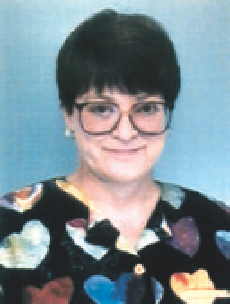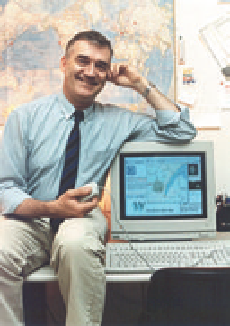Information Technology Reference
In-Depth Information
boss, David Williams. Williams had the difficult job of defending his Data
and Documentation Division - renamed in 1990 as Computing and Networks
Division - from accusations by physicists that the division was wasting money
on exotic computer science research that could better be spent supporting
physics experiments (
B.11.4
). Berners-Lee's networked hypertext project was
therefore only “informally” allowed to proceed. In 1990, with Williams delib-
erately turning a blind eye to the project, Sendall authorized the purchase for
Berners-Lee of a new NeXT computer, a high-end workstation developed by
Steve Jobs. Sendall told Berners-Lee, “When you get the machine, why not try
programming your hypertext thing on it?”
11
Berners-Lee was now faced with the uphill task of convincing the CERN
scientists, who were extremely busy and already highly proficient in the use
of computers, that his idea of a global hypertext system was both exciting and
useful. First he needed a name. After debating possibilities such as “Information
Mesh” and “Mine of Information,” he settled on the ambitious-sounding “World
Wide Web.” He was then fortunate to find the ideal evangelist to help him
spread the message to the CERN community, the Flemish-speaking Belgian
Robert Cailliau (
B.11.5
). Berners-Lee said later, “In the marriage of hypertext
and the Internet, Robert was best man.”
12
They began by trying to interest some
of the companies that currently sold nonnetworked hypertext systems. Even
Electronic Book Technologies, Inc., in Rhode Island, established by the legend-
ary computer scientist Andy van Dam from Brown University, who had earlier
collaborated with Ted Nelson, rejected Berners-Lee's proposal. Van Dam instead
insisted on a centralized link database so that there would be no broken links.
By contrast, Berners-Lee envisioned a truly dynamic system:
B.11.4. Official CERN photo of
Peggie Rimmer, the manager in
CERN's Documentation and Data
Division who was responsible for
hiring Tim Berners-Lee back to
CERN in 1984. She, together with
her husband, Mike Sendall, and the
Documentation and Data Division
director, David Williams, provided
the necessary “air cover” from the
physicists to allow Tim Berners-Lee
to invent the web.
I was looking at a living world of hypertext, in which all the pages would be
constantly changing. It was a huge philosophical gap. Letting go of that need
for consistency was a crucial design step that would allow the Web to scale.
13
He therefore started to write his own “web client” program that would allow
the creation, editing, and browsing of hypertext pages. To identify the links
in the documents, he developed a simple language called
HyperText Markup
Language
(HTML). HTML used labels called
tags
to indicate where there were
links to other documents. Publishers had used similar tagging schemes for
many years to specify how documents should be formatted for typesetting.
The original HTML suggested by Berners-Lee contained only a dozen tags
(see
Fig. 11.7
). Over the years, new tags were introduced for embedding images,
multimedia, and scripts, so that the number of tags is now close to a hundred.
To specify document addresses down to the specific file on a specific computer,
Berners-Lee came up with the idea of a
universal resource identifier
(URI). The URI
consisted of the computer server name followed by the directory path and file
name of the document. For example, the address
http://info.cern.ch
specified the
original CERN website, which contained information with links to other docu-
ments and sites (
Fig. 11.8
). The first four letters tell the browser which protocol
to use to find the document. Berners-Lee introduced the
hypertext transfer protocol
(HTTP), a set of instructions that specified how a computer could communicate
with other computers over the Internet to get to the desired content at a remote
B.11.5. Robert Cailliau was born in
Tongeren, Belgium in 1947 and has
degrees in electrical and mechanical
engineering from the University of
Ghent and in computing from the
University of Michigan. Cailliau was
a co-author, with Tim Berners-Lee, of
the 1990 version of the project pro-
posal to CERN management for the
World Wide Web.



Search WWH ::

Custom Search